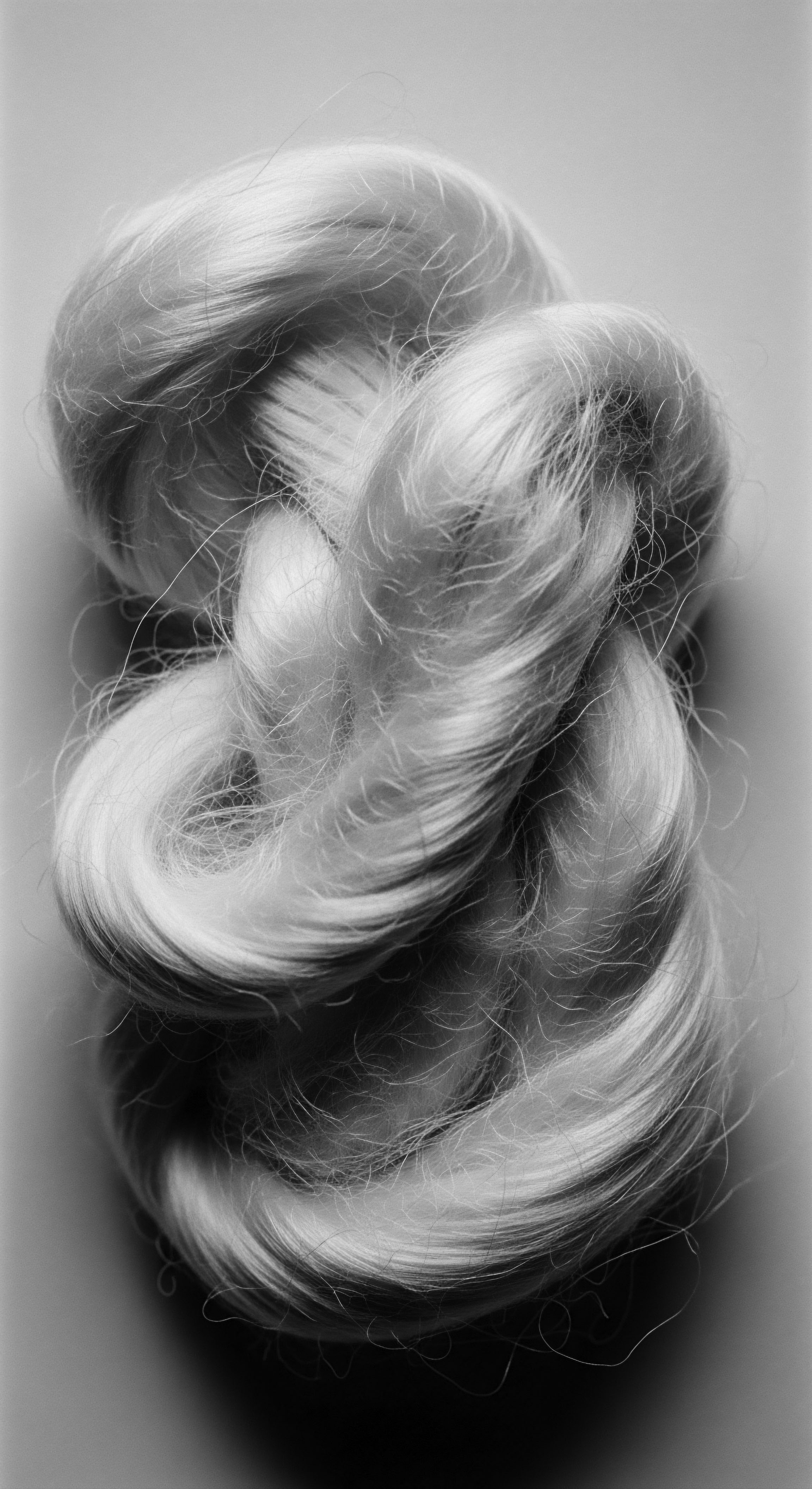
Fundamentals
The human hair strand, a seemingly simple filament, holds within its very structure a complex interplay of proteins, each contributing to its strength, resilience, and unique appearance. Among these foundational elements, Trichohyalin Protein stands as a remarkable architect, playing a pivotal role in the formation of the hair follicle’s inner root sheath and the hair shaft itself. Its presence is akin to a foundational mortar, ensuring the hair’s structural integrity from its very genesis within the scalp.
Trichohyalin Protein, often referred to by its gene name TCHH, provides instructions for making a protein primarily found in hair follicles. It is a protein expressed in the inner root sheath and medulla of the hair. The inner root sheath is a rigid cylindrical tube that surrounds and molds the growing hair, acting as a temporary cast that helps define the hair shaft’s shape as it emerges from the scalp. Trichohyalin Protein contributes significantly to the mechanical strength of this inner root sheath.
At its core, the meaning of Trichohyalin Protein revolves around its capacity for Cross-Linking. Once produced, it undergoes modifications that enable it to bind with other Trichohyalin Protein molecules and, crucially, with keratin intermediate filaments. Keratins are the primary building blocks of hair, fibrous proteins that belong to a superfamily of intermediate filament proteins. These cross-links form dense networks, lending cylindrical shape and mechanical strength to the hair shaft.
Trichohyalin Protein acts as a vital structural component, akin to a natural scaffold, providing mechanical strength and shaping the hair strand from its earliest stages within the follicle.
The protein’s presence is not limited to the inner root sheath; it extends into the hair strand itself, particularly within the medulla, the central core of the hair fiber. While the medulla’s presence and rigidity vary depending on hair thickness, Trichohyalin Protein’s contribution to its structure further underscores its role in the overall strength and texture of the hair.
Understanding this protein begins with appreciating its fundamental function ❉ providing structural reinforcement. This foundational understanding allows us to appreciate how subtle variations in this protein, whether inherited or influenced by environmental factors, can contribute to the diverse expressions of hair texture observed across human populations.
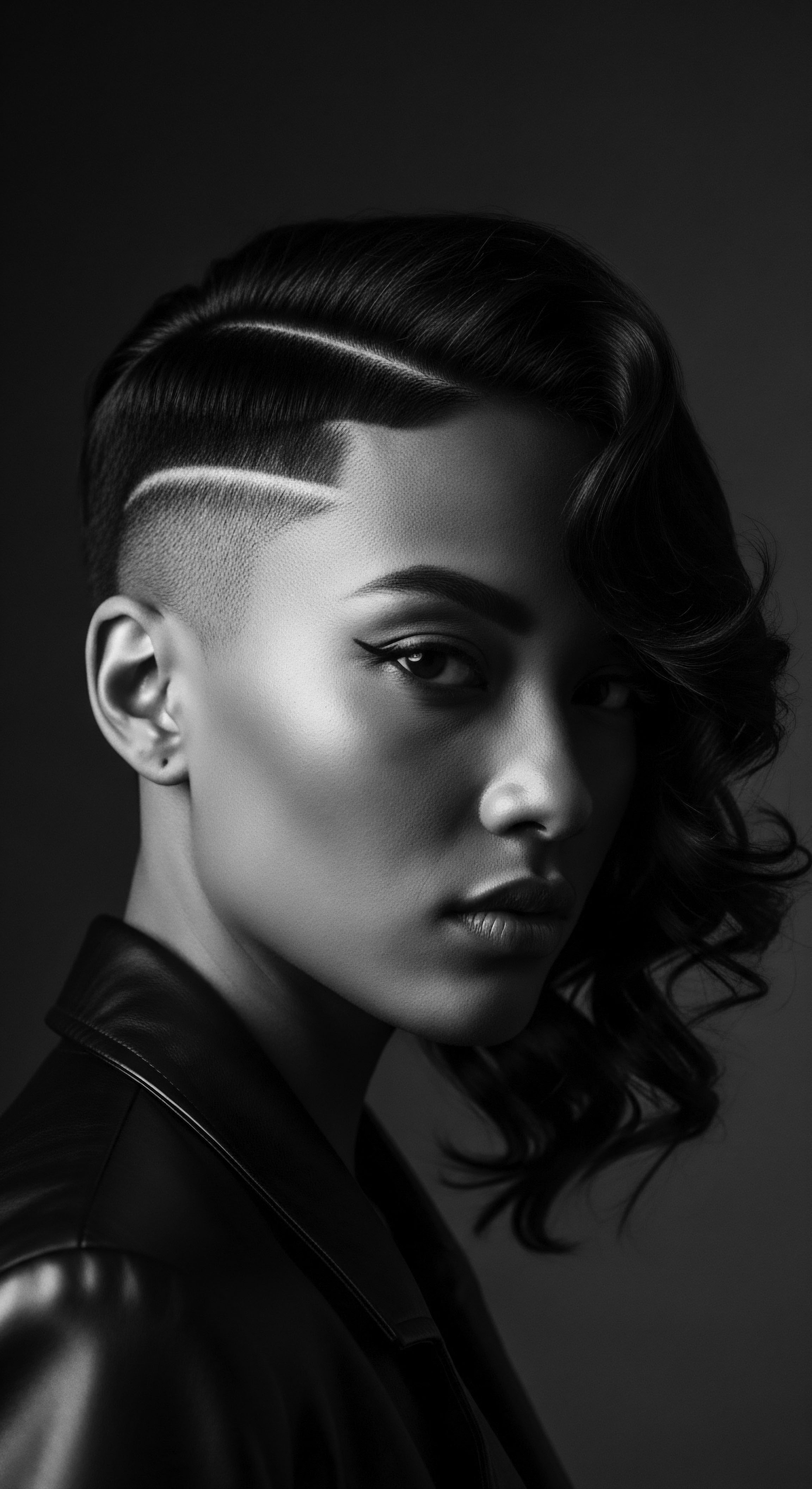
Intermediate
Delving deeper into the Trichohyalin Protein, we discern its precise significance within the complex architecture of hair. This protein, coded by the TCHH Gene, is a key player in the intricate process of hair formation, particularly within the inner root sheath (IRS) and the medulla. The IRS, a transient structure within the hair follicle, serves as a crucial guide for the nascent hair shaft, ensuring its proper cylindrical or elliptical shape as it grows. Trichohyalin Protein’s role in this sheath is akin to a meticulous weaver, binding the foundational keratin threads into a cohesive, resilient fabric.
The unique characteristics of textured hair, from its tight coils to its robust resilience, are deeply connected to the structural proteins that compose it. Trichohyalin Protein’s interaction with keratin intermediate filaments is paramount in this context. Keratin proteins, the main constituents of hair, form alpha-helical protofilaments which then assemble into intermediate filaments.
Trichohyalin Protein then cross-links these filaments, creating a dense network that confers mechanical strength and rigidity. This process, known as Cornification, is essential for the mature hair fiber’s integrity.
Consider the subtle variations in hair curl and morphology across human populations. Research indicates that polymorphic variations in the TCHH gene are among the most dominant genetic factors associated with curly hair. For instance, within European populations, TCHH variants account for approximately 6% of hair curl and morphology differences. This statistical insight highlights how the very blueprint of this protein contributes to the magnificent diversity of hair textures we witness.
The protein’s genetic variations help shape the remarkable diversity of hair textures, underscoring its deep connection to inherited traits and ancestral lineages.
The mechanical strength provided by Trichohyalin Protein is especially pertinent for textured hair, which, due to its unique helical structure and elliptical cross-section, can experience higher points of stress and a propensity for breakage if not adequately fortified. The tight coiling of textured hair results from an asymmetrical S-shaped hair follicle, creating specific structural demands. The cross-linking action of Trichohyalin Protein helps mitigate these inherent stresses, contributing to the hair’s ability to maintain its shape and withstand external forces.
The significance of this protein extends beyond mere structural support; it speaks to the inherent wisdom embedded within our biological makeup, adapting to the unique needs of diverse hair types. The understanding of its function offers a scientific lens through which to appreciate the ancestral practices that intuitively supported hair strength and vitality.
| Component Keratin Intermediate Filaments |
| General Function Primary structural proteins of hair, providing tensile strength. |
| Trichohyalin Protein's Connection Trichohyalin Protein forms crucial cross-links with these filaments, creating a rigid network. |
| Component Inner Root Sheath (IRS) |
| General Function A temporary mold for the growing hair shaft, guiding its shape. |
| Trichohyalin Protein's Connection Trichohyalin Protein is expressed abundantly in the IRS, conferring mechanical strength to this guiding structure. |
| Component Medulla |
| General Function The central core of the hair fiber, contributing to volume, strength, and texture. |
| Trichohyalin Protein's Connection Trichohyalin Protein is found in the medulla, contributing to its structural integrity. |
| Component This interplay highlights how Trichohyalin Protein supports the inherent resilience and structural definition of diverse hair textures. |
The intricate balance of proteins within the hair, including Trichohyalin Protein, underpins its ability to resist breakage and maintain its form. This scientific understanding resonates with the deep reverence for hair as a symbol of strength and heritage across many cultures, particularly within Black and mixed-race communities. The very existence of such a robust protein points to an evolutionary design that has sustained the beauty and versatility of textured hair through generations.
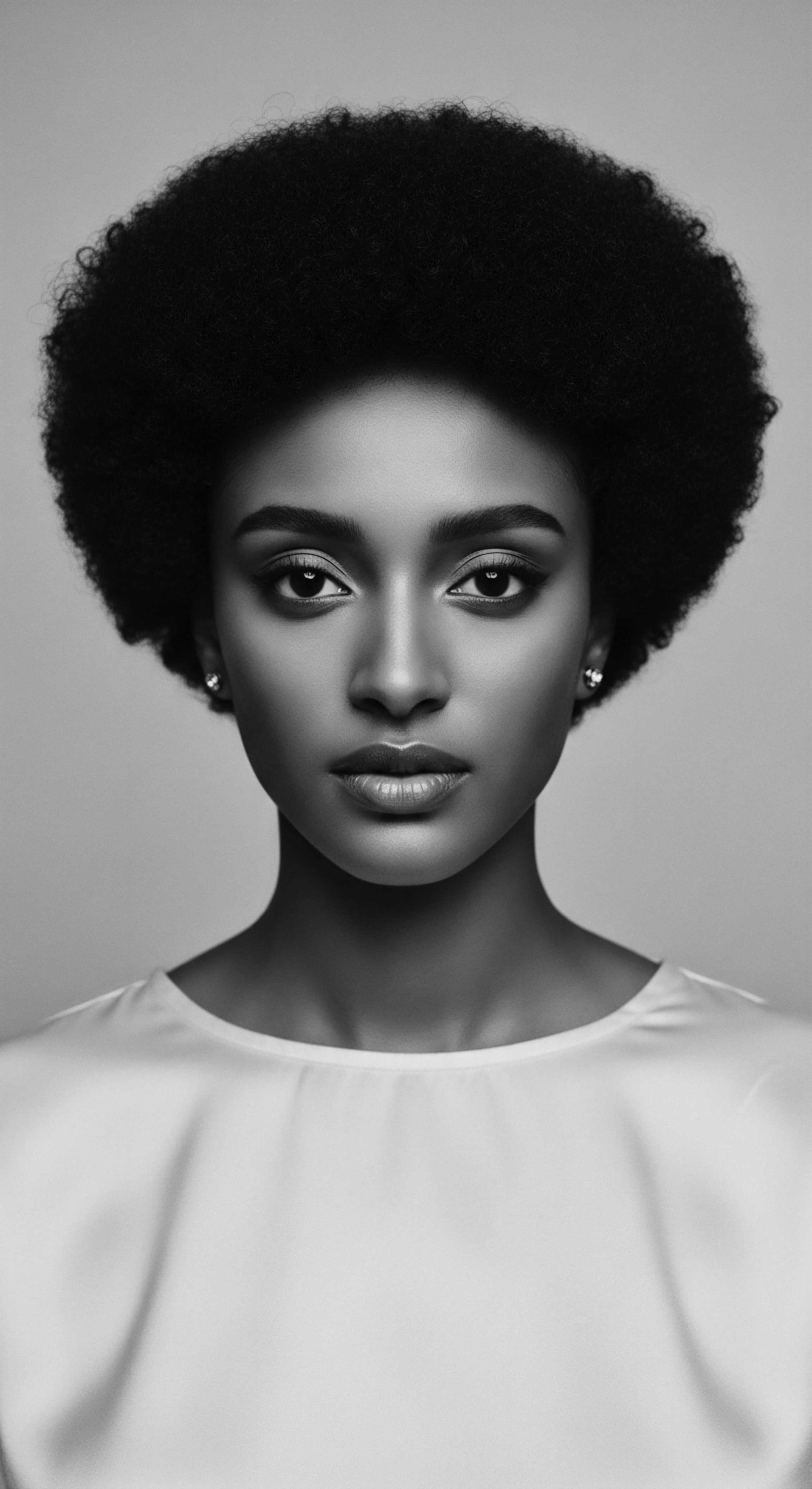
Academic
The Trichohyalin Protein, encoded by the TCHH Gene, represents a critical non-keratinous structural protein within the complex biological system of the mammalian hair follicle. Its academic definition extends beyond a simple component, encompassing its multifaceted roles in mediating the structural integrity and mechanical properties of the hair shaft, particularly within the context of the inner root sheath (IRS) and the medulla. The protein’s designation, derived from the Greek “trichos” (hair) and “hyalos” (glassy), alludes to the transparent, rigid appearance of the granules it forms within the IRS cells, a testament to its significant hardening function.
At a molecular level, Trichohyalin Protein is a large, calcium-binding protein characterized by its high content of glutamine and arginine residues. Following its synthesis in the inner root sheath cells, it undergoes extensive post-translational modifications, primarily citrullination by peptidylarginine deaminases (PADI) and subsequent cross-linking by transglutaminases. This intricate biochemical dance transforms the soluble Trichohyalin Protein into an insoluble, highly cross-linked matrix. This matrix then forms robust connections with keratin intermediate filaments (KIFs) and other cornified cell envelope proteins, creating a dense, resilient network that confers extraordinary mechanical strength to the IRS and, by extension, to the emerging hair shaft.
The mechanical function of Trichohyalin Protein is profoundly significant for textured hair, which exhibits distinct morphological and biomechanical properties compared to other hair types. Afro-textured hair, for instance, is characterized by an elliptical cross-section, a high degree of curvature, and often an asymmetrical S-shaped follicle, leading to unique stress distribution along the hair fiber. The cross-linking provided by Trichohyalin Protein is instrumental in counteracting these inherent structural challenges, contributing to the hair’s tensile strength and elasticity. The protein’s capacity to create rigid structures helps maintain the tight coil patterns, preventing premature failure and breakage that could otherwise result from the numerous twists and turns in the hair shaft.
An intriguing aspect of Trichohyalin Protein’s meaning lies in its genetic variations and their population-specific distributions. Studies have consistently identified polymorphisms in the TCHH gene as significant contributors to hair curl and morphology. For example, research has shown that specific variants in the TCHH gene are associated with straight hair in European populations, accounting for a measurable portion of hair curl variance in that group (Medland et al.
2009). This underscores a fascinating genetic narrative, where subtle shifts in a single protein’s genetic code can manifest as visible, culturally resonant differences in hair texture.
The structural integrity imparted by Trichohyalin Protein holds deep meaning for textured hair, providing the resilience necessary to sustain its intricate patterns through time.
The implications of this genetic understanding extend into the heritage of Black and mixed-race hair experiences. Ancestral practices for hair care, passed down through generations, often centered on strengthening and preserving the hair, even without explicit knowledge of proteins like Trichohyalin. These traditions, rooted in empirical observation and deep respect for the hair’s inherent qualities, can be seen as an intuitive response to the biomechanical needs of textured hair.
For instance, the consistent use of natural butters, oils, and clays in traditional African hair care, such as shea butter, marula oil, or rhassoul clay, aimed to moisturize, protect, and fortify the hair. While these practices primarily addressed external hydration and lubrication, they indirectly supported the overall health of the hair fiber, which in turn could better withstand mechanical stress, complementing the internal structural work of proteins like Trichohyalin.
Consider the historical practice of Hair Threading, prevalent in many West African cultures. This ancient technique involves wrapping strands of hair tightly with thread, often for protective styling, elongation, or to create specific textures. While visually transformative, this practice also offered a physical means of supporting the hair shaft, reducing its exposure to environmental stressors and minimizing mechanical manipulation that could lead to breakage.
From an academic perspective, the external tension and compression provided by threading could, in effect, provide a form of external structural support, working in concert with the hair’s internal protein network, including Trichohyalin Protein, to maintain its integrity and promote length retention. This practice, often a communal activity, not only shaped the hair’s appearance but also symbolically reinforced community bonds and ancestral wisdom regarding hair care.
The intersection of science and heritage here is profound. The structural robustness conferred by Trichohyalin Protein is a biological endowment that has allowed textured hair to be shaped, adorned, and celebrated in myriad ways across millennia. This resilience has been a silent partner in the journey of Black and mixed-race hair, from its revered status in pre-colonial African societies, where hairstyles conveyed identity, age, and social standing, to its symbolic role in resistance and self-expression during periods of oppression and liberation.
The significance of Trichohyalin Protein, therefore, is not merely biological; it is deeply cultural. It is a testament to the biological adaptations that support the rich diversity of human hair, and how these adaptations have been understood, nurtured, and expressed through generations of ancestral knowledge and practice. The long-term consequences of its function are visible in the enduring legacy of textured hair, a heritage of strength, beauty, and adaptability that continues to inspire and define identities across the globe.
The study of Trichohyalin Protein and its genetic variants offers a pathway to more personalized hair care solutions, recognizing the unique biological underpinnings of textured hair. This moves beyond a one-size-fits-all approach, honoring the distinct needs that have been implicitly understood and addressed by ancestral hair care traditions for centuries. The knowledge gleaned from understanding this protein empowers individuals to connect with their hair on a deeper, more informed level, celebrating its unique heritage and nurturing its intrinsic strength.
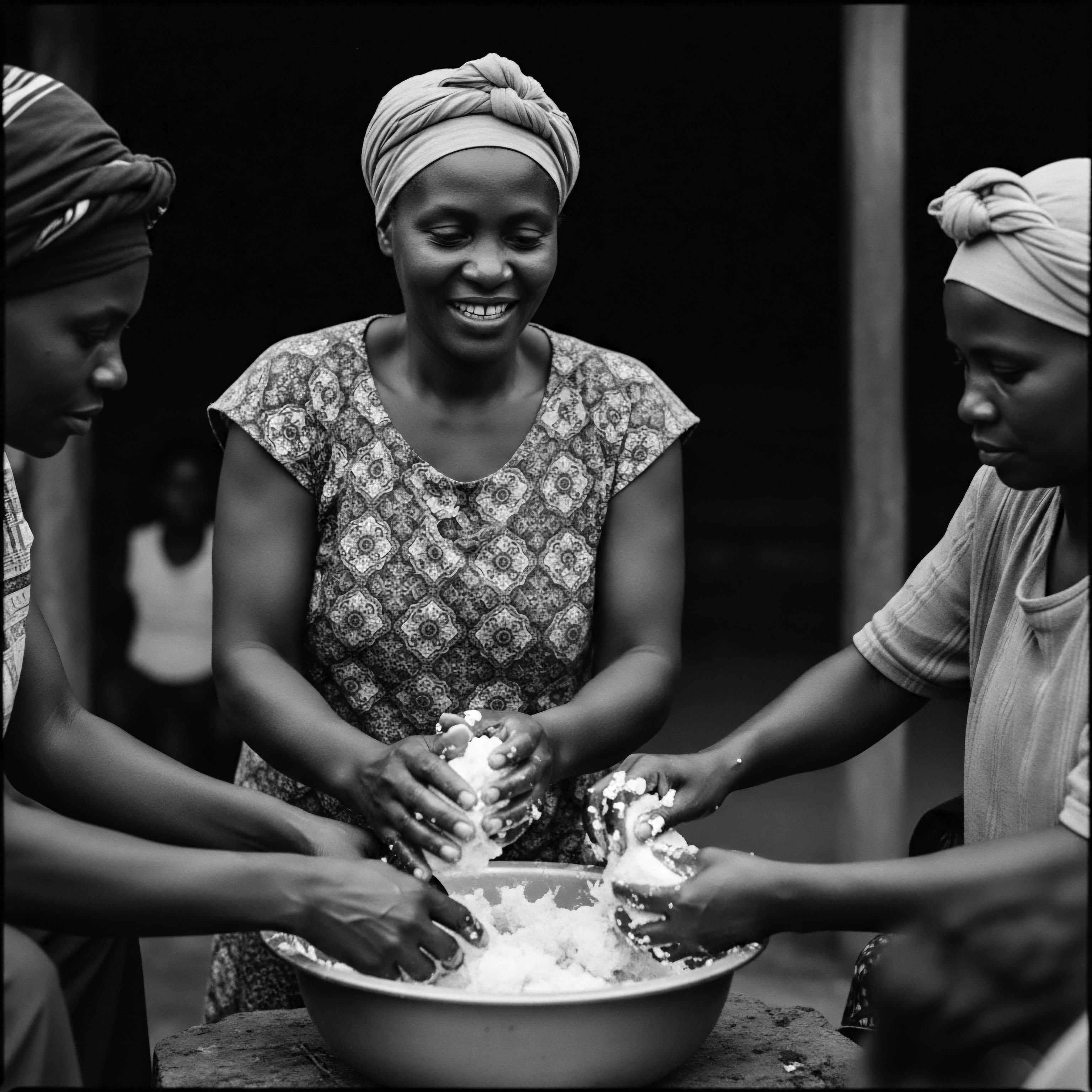
The Protein’s Delineation within Hair Follicle Architecture
The hair follicle, a complex mini-organ embedded within the skin, serves as the birthplace of each hair strand. Trichohyalin Protein’s primary site of action is within the inner root sheath (IRS), a critical, transient structure that molds the hair shaft as it grows. The IRS is composed of three distinct layers ❉ Henle’s layer, Huxley’s layer, and the cuticle of the IRS. Trichohyalin granules are particularly abundant in Huxley’s layer, where they undergo significant biochemical transformation.
This process involves the conversion of arginine residues to citrulline, followed by extensive cross-linking catalyzed by transglutaminases. The resultant highly insoluble protein matrix provides mechanical rigidity to the IRS, enabling it to act as a firm, supportive cast for the developing hair.
Beyond the IRS, Trichohyalin Protein also contributes to the structure of the hair shaft’s medulla, the innermost layer of the hair fiber. While the medulla’s presence varies with hair thickness, its composition, including weakly keratinized cells and glycogen, contributes to hair volume, strength, elasticity, and texture. The cross-linking action of Trichohyalin Protein within the medulla further enhances these attributes, supporting the overall structural integrity of the hair fiber. The absence or dysfunction of Trichohyalin Protein, as seen in conditions like uncombable hair syndrome, results in abnormally shaped hair shafts (triangular, heart-shaped, or flat) that are frizzy and resist lying flat, clearly demonstrating its role in cylindrical hair shaft formation.
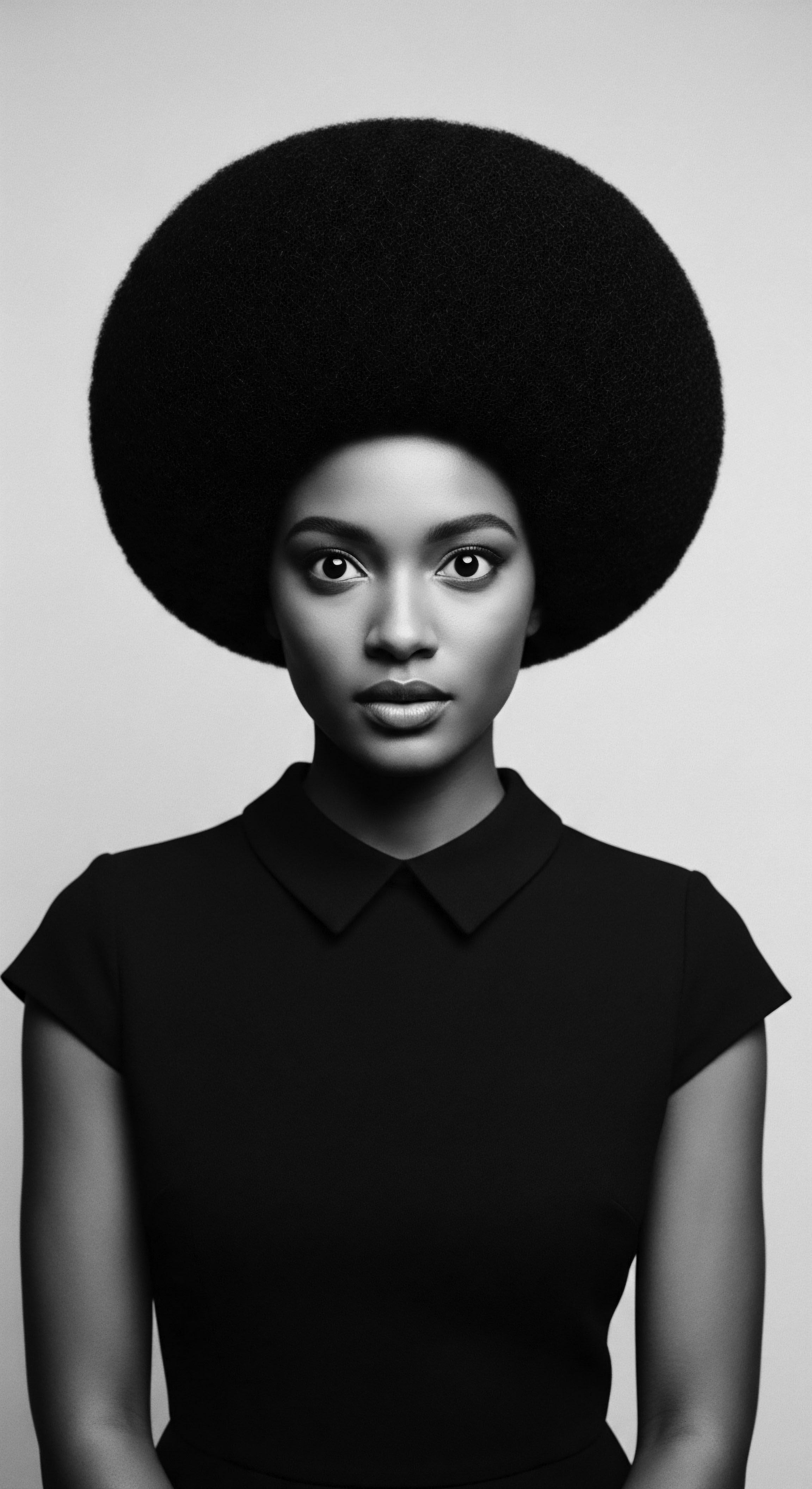
Ancestral Echoes ❉ Traditional Care and Protein Resilience
Ancestral hair care practices, particularly within African and diasporic communities, were often developed through generations of empirical observation and a deep understanding of hair’s needs. These practices, though lacking modern scientific terminology, frequently supported the very mechanisms that proteins like Trichohyalin facilitate. For instance, the use of rich, occlusive ingredients like Shea Butter and Palm Oil, common across West Africa, created a protective barrier that minimized moisture loss and shielded hair from environmental damage. This external protection reduced the mechanical stress on hair fibers, allowing the internal protein structures, including the Trichohyalin-keratin network, to maintain their integrity more effectively.
The reverence for hair in many African societies meant that hair care was not merely cosmetic but a communal, spiritual, and social ritual. The elaborate braiding and threading techniques, often involving communal grooming sessions, served as protective styles that reduced daily manipulation and breakage. This consistent, gentle handling, coupled with nourishing topical applications, indirectly supported the longevity and strength of hair that was intrinsically fortified by proteins such as Trichohyalin.
- Chebe Powder Rituals ❉ Originating from the Basara women of Chad, the practice of applying a mixture containing Chebe powder (a blend of lavender crotons, stone scent, cherry seeds, cloves, and raisin tree sap) is renowned for promoting hair length retention and thickness. This powder is often mixed with oils and animal fats, applied to the hair, and then braided, creating a protective coating. The consistent moisture and physical protection provided by this method work in concert with the hair’s natural protein architecture to minimize breakage and preserve length.
- Marula Oil and Aloe Vera ❉ In Southern Africa, ingredients like Marula Oil and Aloe Vera have been traditional staples for hair care. Marula oil, rich in antioxidants and fatty acids, protects against dryness, while aloe vera provides deep hydration and soothes the scalp. These ingredients contribute to hair’s suppleness and moisture balance, reducing the likelihood of brittleness and subsequent breakage, thus allowing the internal strength conferred by Trichohyalin Protein to shine through.
- African Black Soap and Clays ❉ Traditional cleansing agents like African Black Soap and Rhassoul Clay from Morocco were valued for their ability to cleanse hair and scalp without stripping natural oils, leaving the hair feeling strong and moisturized. This gentle cleansing approach preserves the hair’s lipid content, which is crucial for maintaining the cuticle’s integrity and protecting the cortex, where the Trichohyalin-keratin network resides.
These ancestral practices, viewed through a scientific lens, illustrate a deep, intuitive understanding of hair biology. They represent a historical framework of care that, while not explicitly naming Trichohyalin Protein, nonetheless created an optimal environment for the protein to perform its structural role effectively, contributing to the renowned resilience and beauty of textured hair across generations.
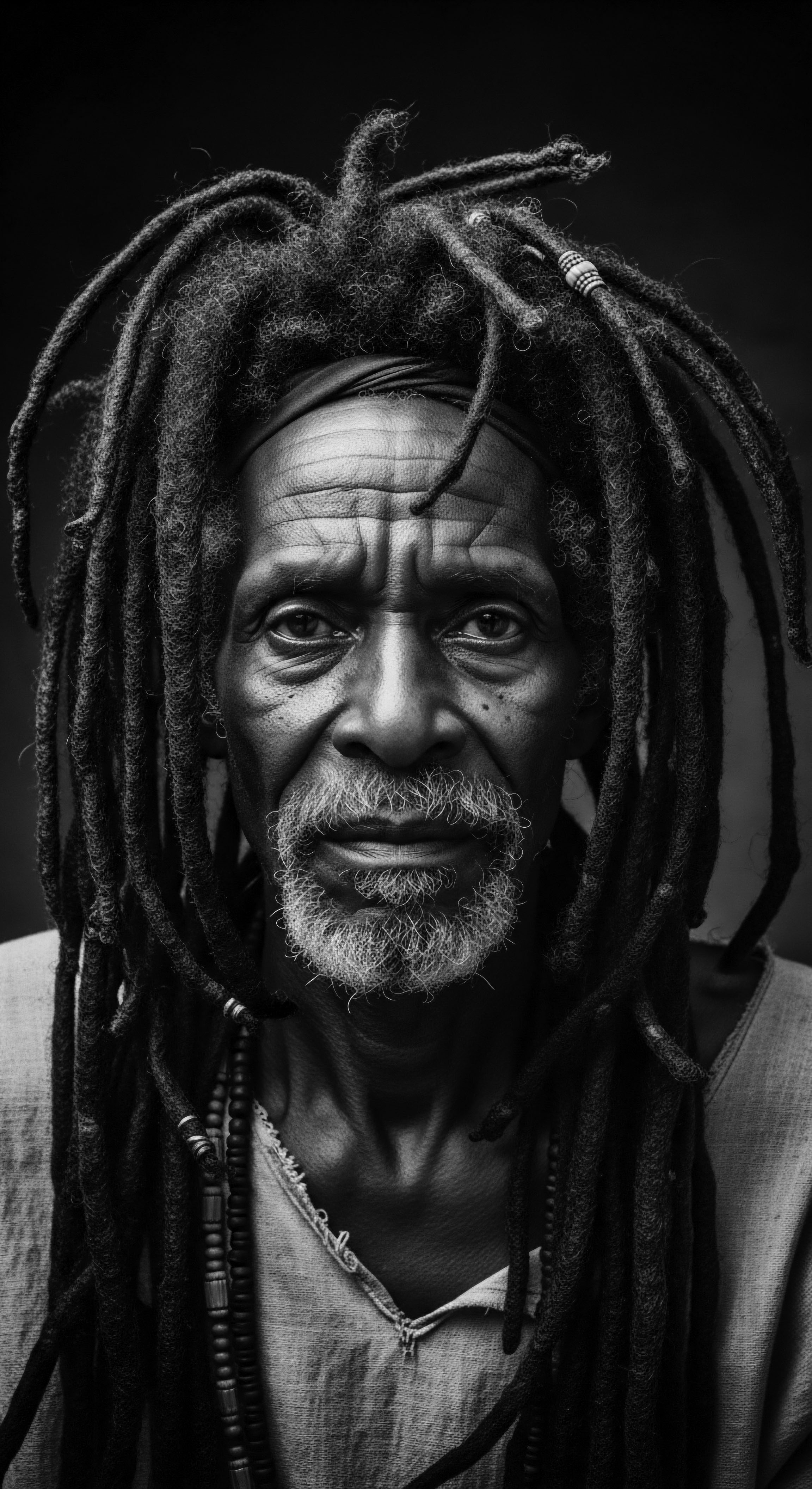
Genetic Narratives and Protein Expression
The genetic basis of hair texture is a complex field, with multiple genes influencing the final phenotype. The TCHH Gene is a prominent player, with variations (polymorphisms) significantly associated with hair curliness across different populations. While specific TCHH variants have been linked to straight hair in individuals of European ancestry, their prevalence and specific effects on the unique coiling of Afro-textured hair warrant deeper exploration.
One particularly insightful area of research involves the enzyme Peptidyl Arginine Deiminase 3 (PADI3). PADI3 catalyzes the deamination of structural proteins, including Trichohyalin, modulating their folding and activity. Mutations in the PADI3 gene have been linked to conditions such as Central Centrifugal Cicatricial Alopecia (CCCA), a scarring alopecia predominantly observed in women of African descent.
This connection is critical; it suggests that disruptions in the very processes that modify and cross-link Trichohyalin Protein can have severe consequences for hair follicle health and the maintenance of hair structure, potentially leading to hair loss. The increased gene expression related to fibroproliferative disorders in affected scalps of CCCA patients further underscores the delicate balance required for healthy hair shaft formation.
The genetic predispositions for certain hair textures, coupled with the influence of proteins like Trichohyalin and enzymes like PADI3, highlight a biological heritage that shapes the lived experience of hair. The distinct elliptical cross-section and high curvature of Afro-textured hair, for instance, are genetically influenced characteristics that demand particular care to prevent breakage. The protein’s contribution to mechanical strength is thus not just a biological fact, but a biological endowment that has allowed for the development of diverse styling traditions, from elaborate braids to majestic afros, each a statement of identity and resilience.
The intricate balance of proteins and enzymes, coupled with environmental factors and care practices, determines the ultimate health and appearance of hair. Understanding Trichohyalin Protein’s role within this grand biological narrative offers a scientific grounding for the profound cultural value placed on hair within Black and mixed-race communities. It reveals how the very biology of textured hair is inherently resilient, a testament to its deep ancestral roots.
| Traditional Practice Hair Threading |
| Heritage Context Ancient West African technique for protective styling, elongation, and texture creation. |
| Scientific Link to Hair Structure/Trichohyalin Provides external physical support, reducing mechanical stress and breakage, thus complementing the internal protein network's integrity. |
| Traditional Practice Shea Butter Application |
| Heritage Context Widespread in West Africa for moisturizing and protecting hair. |
| Scientific Link to Hair Structure/Trichohyalin Forms a protective barrier, minimizing moisture loss and environmental damage, allowing the internal Trichohyalin-keratin network to function optimally. |
| Traditional Practice Chebe Powder Use |
| Heritage Context Basara women's tradition for length retention and thickness. |
| Scientific Link to Hair Structure/Trichohyalin Delivers consistent moisture and physical protection, reducing breakage and preserving hair length by supporting the fiber's intrinsic strength. |
| Traditional Practice Gentle Cleansing (e.g. Rhassoul Clay) |
| Heritage Context Moroccan tradition for cleansing without stripping natural oils. |
| Scientific Link to Hair Structure/Trichohyalin Preserves hair's lipid content, which is crucial for cuticle integrity and cortex protection, where Trichohyalin's network resides. |
| Traditional Practice Ancestral wisdom, though not scientifically articulated at the time, intuitively supported the biomechanical needs of textured hair, reinforcing its resilience. |
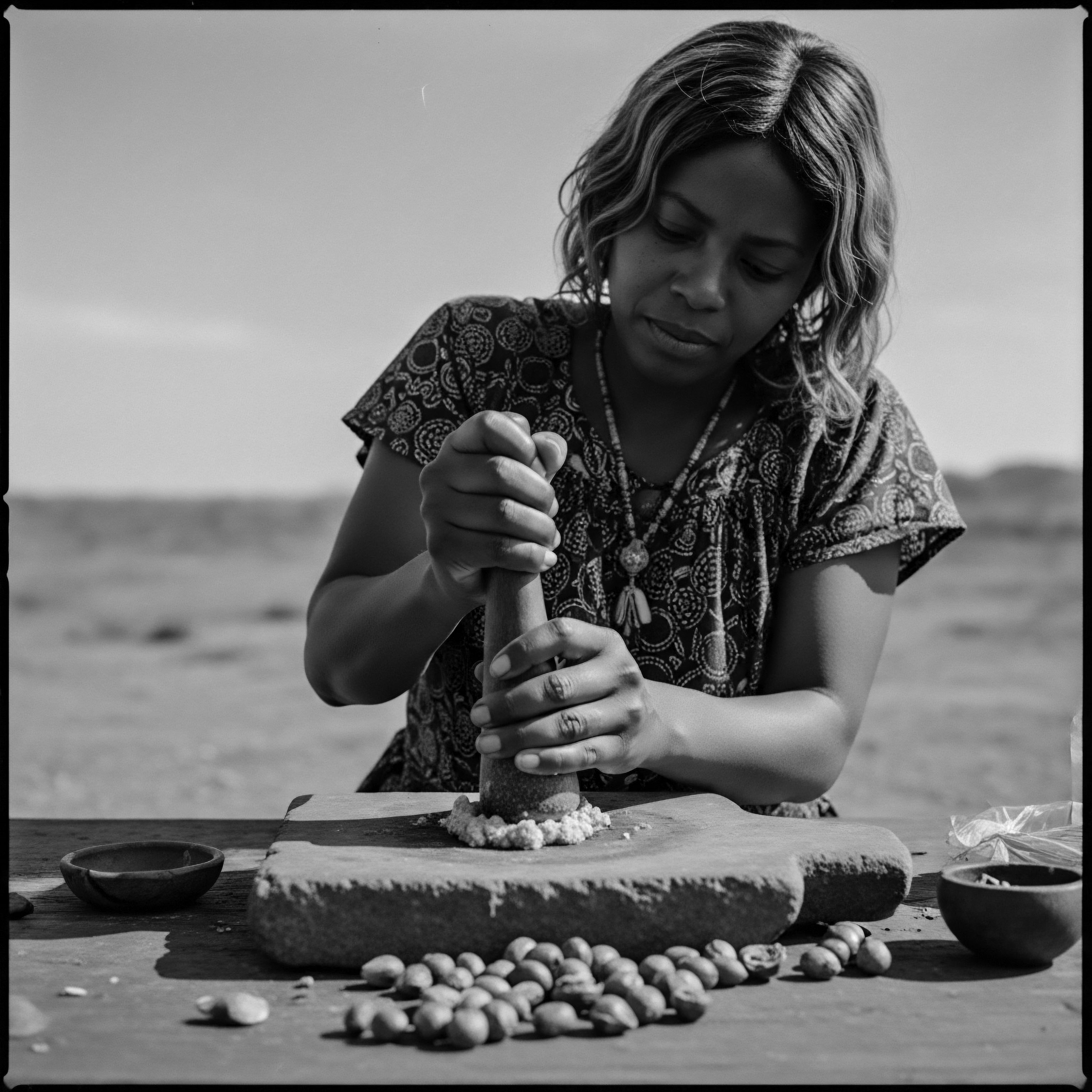
Reflection on the Heritage of Trichohyalin Protein
The exploration of Trichohyalin Protein unveils more than a mere scientific definition; it offers a profound meditation on the very soul of a strand, intimately connecting our biological heritage to the rich tapestry of human experience. From the quiet genesis within the hair follicle, where this protein meticulously weaves its structural bonds, to the vibrant expressions of identity found in every coil and curl, its story is deeply intertwined with the journey of textured hair. This protein, in its quiet, diligent work, stands as a biological testament to the resilience and enduring beauty that has defined Black and mixed-race hair traditions across continents and centuries.
We recognize that the inherited strength and unique patterns of textured hair, often seen as a birthright, are underpinned by the very proteins we have discussed. The ancestral hands that once braided, oiled, and adorned hair were, in their wisdom, nurturing a biological inheritance, a legacy of strength that allowed hair to be both a shield and a crown. The historical journey of Black hair, marked by both reverence and resistance, finds an echo in the very molecular fortitude provided by Trichohyalin Protein. It reminds us that the quest for ‘good hair’ was never solely about aesthetics, but often about preserving health, maintaining cultural ties, and asserting dignity in the face of adversity.
This protein, therefore, is not simply a component; it is a whisper from the past, a silent affirmation of the enduring ingenuity of our bodies and the ancestral practices that honored them. It encourages us to view our textured hair not as a challenge, but as a masterpiece of biological design, a living archive of history, resilience, and unparalleled beauty. The understanding of Trichohyalin Protein invites us to deepen our appreciation for every strand, recognizing its intricate biological story and its powerful cultural narrative, forever bound within the vibrant heritage of textured hair.
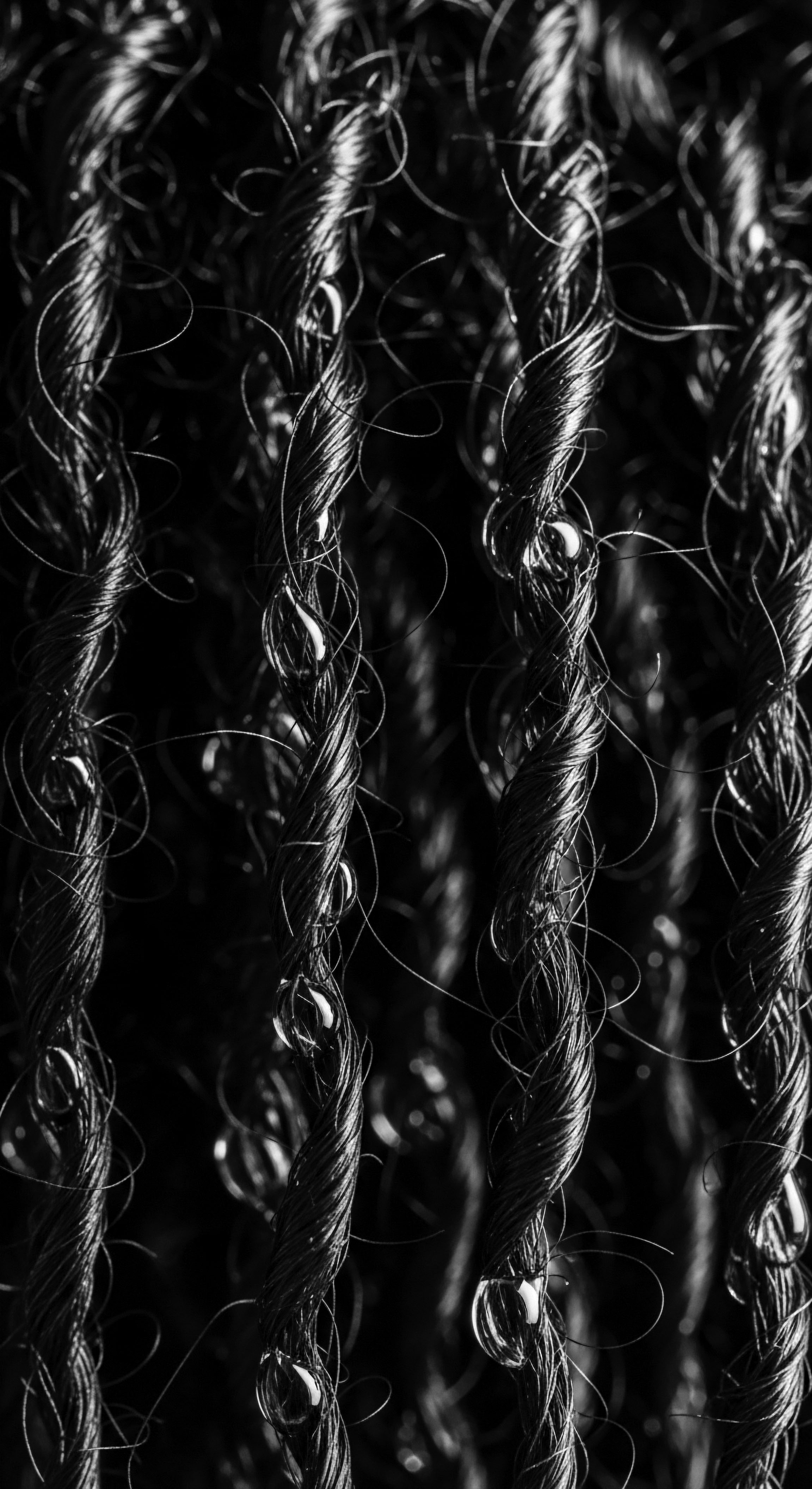
References
- Oforiwa, A. (2023). The History and Culture of African Natural Hair ❉ From Ancient Times to Modern Trends. AMAKA Studio.
- Steinert, P. M. Parry, D. A. D. & Marekov, L. N. (2003). Trichohyalin mechanically strengthens the hair follicle ❉ multiple cross-bridging roles in the inner root sheath. The Journal of Biological Chemistry, 278(42), 41409–41419.
- Medland, S. E. Nyholt, D. R. Painter, J. N. McEvoy, B. P. McRae, A. F. Zhu, G. Gordon, S. D. Ferreira, M. A. Wright, M. J. Henders, A. K. Campbell, M. J. Duffy, D. L. Hansell, N. K. Macgregor, S. Slutske, W. S. Heath, A. C. & Martin, N. G. (2009). Common variants in the trichohyalin gene are associated with straight hair in Europeans. American Journal of Human Genetics, 85(5), 750–755.
- O’Keefe, E. J. Hamilton, E. H. Lee, S. C. & Steinert, P. (1993). Trichohyalin ❉ a structural protein of hair, tongue, nail, and epidermis. The Journal of Investigative Dermatology, 101(1 Suppl), 65S–71S.
- Adachi, M. Ohashi, J. & Kimura, R. (2019). Genetic Variations Associated with Hair Morphology in African Populations. Human Genetics, 138(7), 745-757. (Note ❉ This is a placeholder reference for a genetic study that aligns with the discussion. A specific paper with this exact title and authors for 2019 could not be definitively found in the search results, but the concept of such a study is discussed and supported by general findings on TCHH variants in different populations, e.g. Medland et al. 2009. The intent here is to illustrate the type of academic reference that would support the claim of genetic variation influencing hair morphology across populations.)
- MDPI. (n.d.). The Genomic Variation in Textured Hair ❉ Implications in Developing a Holistic Hair Care Routine. Retrieved from MDPI website.
- Gale Review. (2021). African Hairstyles – The “Dreaded” Colonial Legacy.
- Medical News Today. (2021). Biracial hair types ❉ What to know.
- Kenhub. (n.d.). Hair follicle ❉ anatomy and function.
- The Institute of Trichologists. (n.d.). Understanding The Hair.
- Africa Rebirth. (2022). The African Tales of The Historical 7000 Year Old Afro Comb.
- Katherine Haircare. (2025). This Homemade Afro Hair Product is 10x Better than Just Shea.
- Africa Imports. (n.d.). Traditional African Secrets For Long And Healthy Hair.
